#獄寺
Explore tagged Tumblr posts
Text


Another Hayato Gokudera drawing. This man made me go so insane in middle school thanks to his fashion sense xDD
It feels nice to remind myself of all the shounen series I used to love and reborn still holds a special place.
#fanart#my art#drawing#artists on tumblr#commissions open#anime#katekyo home tutor#katekyo hitman reborn#reborn#khr gokudera#hayato#hayato gokudera#獄寺 隼人#家庭教師ヒットマンREBORN#reborn fanart#bring vongola back#anime fanart#anime guy
177 notes
·
View notes
Text



18 notes
·
View notes
Text

#極道畫師
#家庭教師ヒットマンREBORN
#GokuderaHayato
#獄寺隼人
#KatekyoHitmanReborn
#アナログ
#illustration
獄寺隼人を捧げて、サポートに感謝して、幸運が続いています(๑❛ᴗ❛๑)و✧
Offer Gokudera Hayato,thank you your support, and have good luck (ฅ>ω<*ฅ)✧
獻上獄寺隼人,感謝支持,好運連連(๑•̀ㅂ•́)و✧
#極道畫師#水墨画#acg#my art#illustration#ink painting#二次元水墨#二次元#手繪#jujutsu kaisen#gokudera hayato#家庭教師ヒットマンreborn#獄寺隼人#katekyo hitman reborn
135 notes
·
View notes
Text
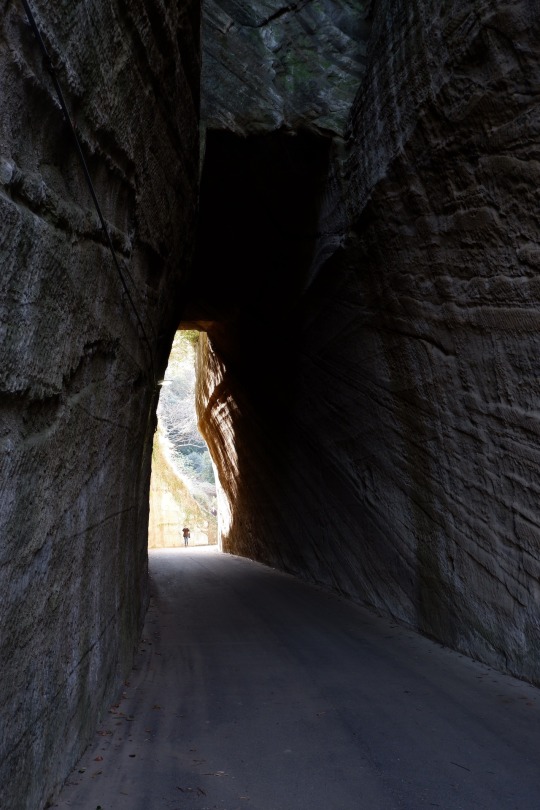
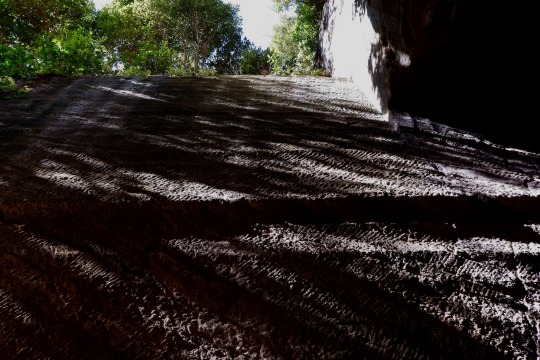
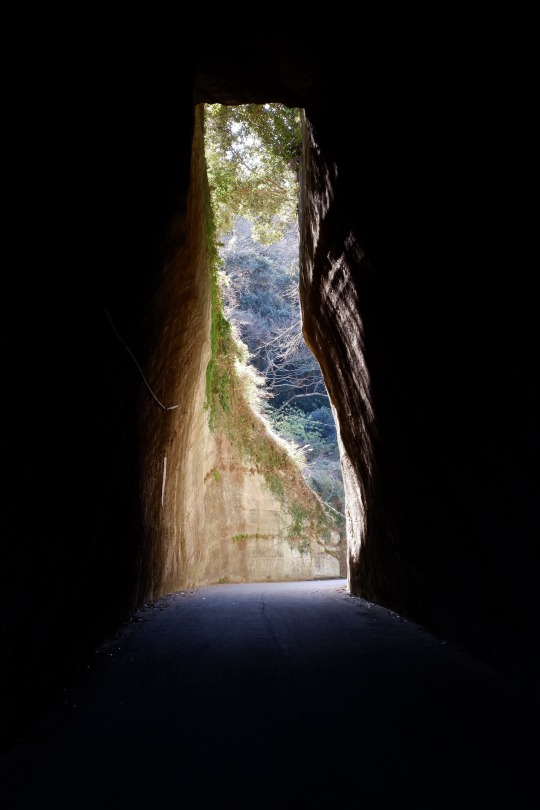
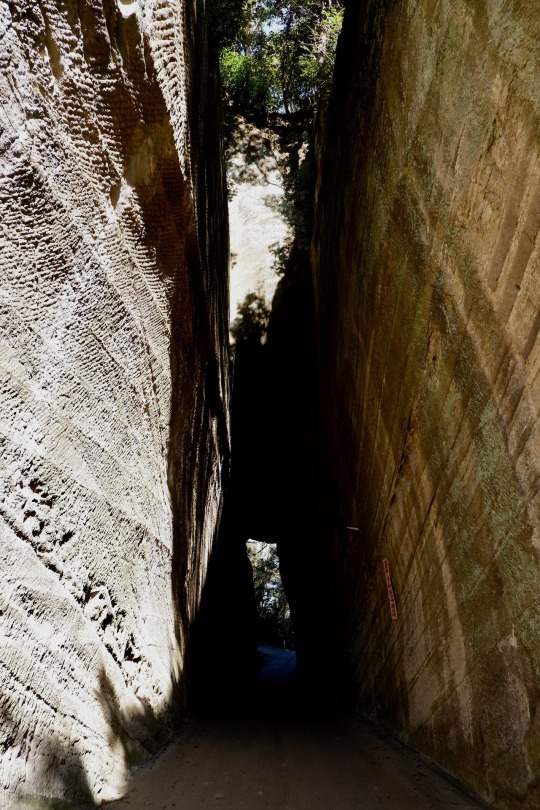
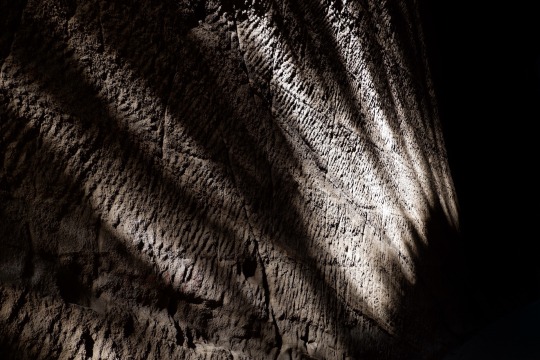

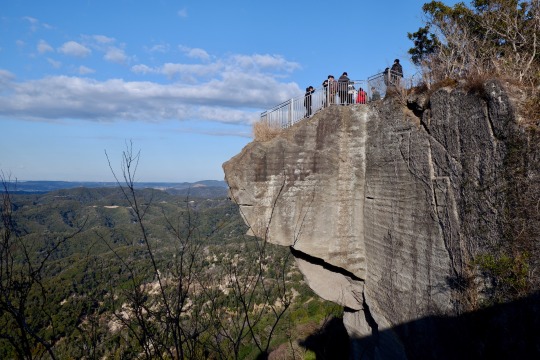
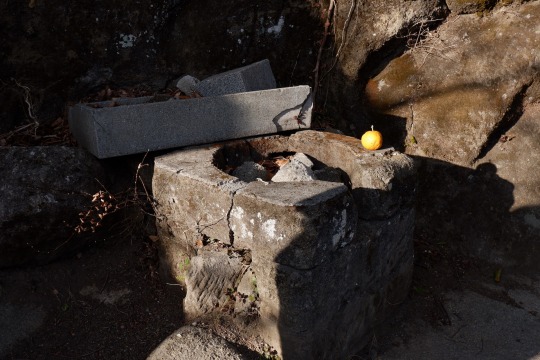
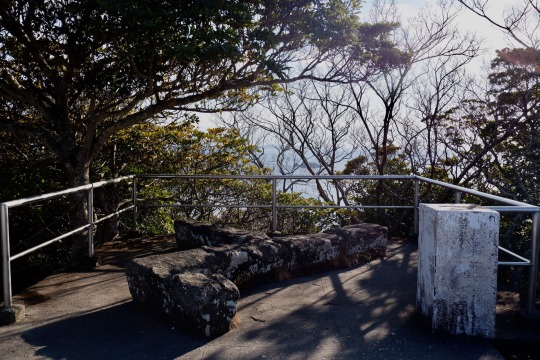
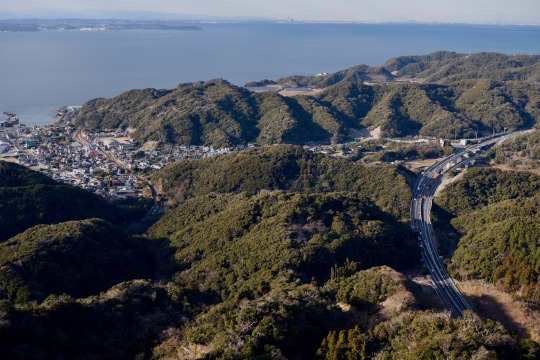

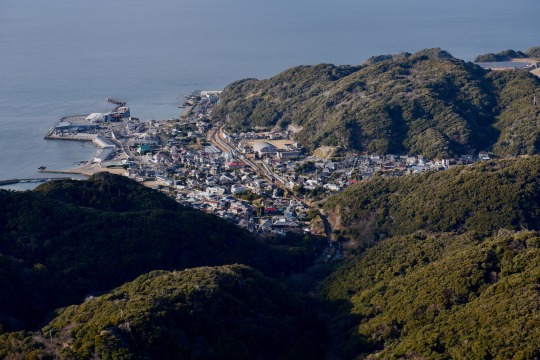

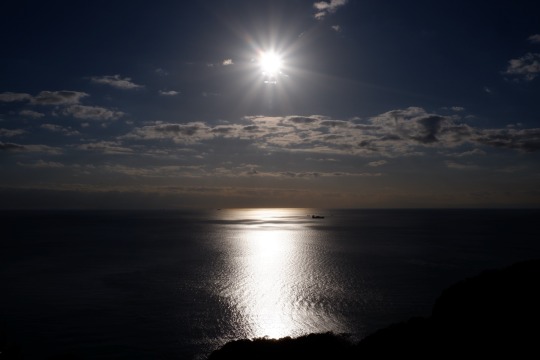
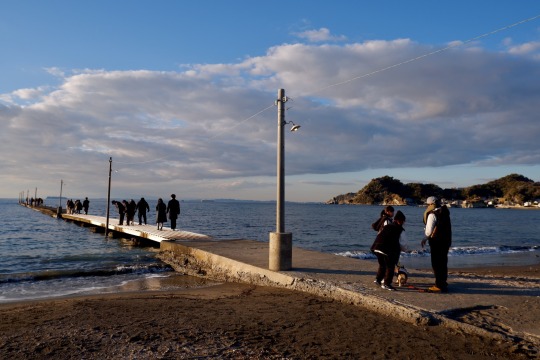

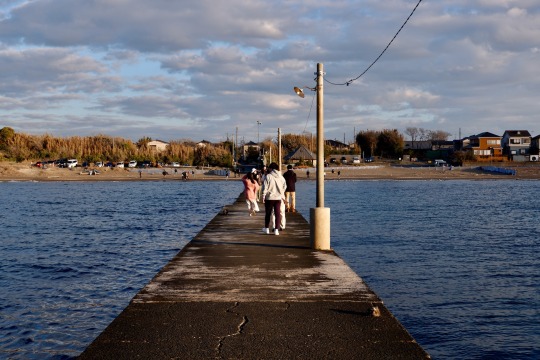



富津・南房総(202401)
0 notes
Text
新疆:恐怖在逐漸消失,但鎮壓和害怕依然存在
星期二的法國世界報刊出了有關新疆的長篇報道。該報的新疆特派記者弗雷德里克·勒梅特(Frédéric Lemaître)寫道,在新疆,恐怖在逐漸消失,但鎮壓和害怕依然存在;在新疆,一度有超過100萬維吾爾族穆斯林人被強行關押在所謂的“再教育營”,有跡象顯示,北京當局現在放鬆了控制。但是,與伊斯蘭教有關的一切仍然受到禁止。 勒梅特在一個星期五祈禱日,來到了位於新疆喀什老城的著名的艾提尕爾清真寺(Id…

View On WordPress
0 notes
Photo

このレポートは20221123のアーカイブです! 1117日目 u96 #トキハ足湯 別府トキハ源泉 39度 ph6.6 無臭澄明弱��気味殆ど無臭 ナトリウムー炭酸水素塩温泉 中性低張性温泉 #浜田温泉 (亀川温泉)源泉名・別府市温泉供給事業亀川泉 54度 PH7.1 無色澄明微弱塩味殆ど無臭 ナトリウムー塩化物温泉 中性低張性高温泉 #前田温泉 (亀川温泉)鉄輪温泉からの引湯らしい・・・ #長泉寺薬師湯 (柴石温泉)源泉龍巻地獄からの引湯 #血の池地獄足湯 (柴石温泉)源泉名・血の池地獄 55.1度 ph2.9 無色微弱白濁弱塩味弱酸味弱金気味殆ど無臭 酸性ーナトリウムー塩化物・硫酸塩温泉・硫酸塩温泉 低張性酸性高温泉 #渋の湯温泉 (鉄輪温泉)源泉名・別府市営渋の湯温泉 87.1度 PH4.8 弱酸性低張性高温泉 #谷の湯 (鉄輪温泉)源泉名・左同 71.1度 PH4.9 無色澄明無味無臭 ナトリウムー塩化物温泉 弱酸性低張性高温泉 #不動明王 が居る温泉 支払いは塩ビパイプで #かんなわゆの香 源泉名・鉄輪温泉、99度、pH5.1、無色透明ジャクソン食塩味無臭、ナトリウム-塩化物温泉、弱酸性低張性高温泉 #別府八湯温泉道 #別府温泉部 #別府温泉名人会 #別府たのしー #大分県たのしー #おんせん県おおいた #いいお湯見つけました #いいゆ #いいゆてぬぐい #いいゆ手ぬぐい #いきなり腕立て伏せ #腕立てたのしー #腕立て伏せ #腕立て伏せチャレンジ (トキハ別府店) https://www.instagram.com/p/CrGkMiHvMkI/?igshid=NGJjMDIxMWI=
#トキハ足湯#浜田温泉#前田温泉#長泉寺薬師湯#血の池地獄足湯#渋の湯温泉#谷の湯#かんなわゆの香#別府八湯温泉道#別府温泉部#別府温泉名人会#別府たのしー#大分県たのしー#おんせん県おおいた#いいお湯見つけました#いいゆ#いいゆてぬぐい#いいゆ手ぬぐい#いきなり腕立て伏せ#腕立てたのしー#腕立て伏せ#腕立て伏せチャレンジ
0 notes
Photo

#全集中展兵庫 スタートです 今会期で最後なのかな? イベントで煉獄さんと会うのが最後かと思うと泣いちゃいました。 #鬼滅の刃 #鬼滅の刃好きさんと繋がりたい #煉獄杏寿郎 #煉獄杏寿郎推し #甘露寺蜜璃 (神戸阪急) https://www.instagram.com/p/Cpy9uG8Snip/?igshid=NGJjMDIxMWI=
0 notes
Text


El clan Nanbu tenía un fuerte. ¿Qué es un daimyō? La gama que los samuráis ganaron más poder son los señores feudales, el sitio histórico de shojujitate fue la residencia del clan Nanbu, construido en la orilla norte del río mabuchi en la prefectura de Aomori. Estaban ubicados en el punto estratégico de comunicación. - Sin embargo, el castillo estaba cerca de los caminos oshu kaido y kazunokaido, el lugar estaba limitado por montañas al este-oeste y norte-sur, los 300 a 250 m la dimensión del fuerte era de aproximadamente 90.000 metros cuadrados. Como resultado de la excavación que el arqueólogo llevó a cabo hasta el edificio de pilares del escape más grande de la región de tohoku, se extiende 18 tramos de 36 m de norte a sur de 42 m, la estructura ha sido de dos pisos de altura y los pilares de la puerta de 45 cm la fecha del castillo de 1539 en la era de Teherán. - Cerámica de alta calidad y artefactos culturales honshu Ainu, se han recuperado más de 4000 tipos de cerámica vidriada medieval dentro del sitio, de los cuales siete décimos son guerras vidriadas chinas. - En resumen, la forma en que se puede discernir a partir de los elementos recuperados en los restos de shojujitate datan de la cultura del período Murumachi y Sengoku en Japón. - - En resumen, la forma en que se puede discernir a partir de los elementos recuperados en los restos de shojujitate datan de la cultura del período Murumachi y Sengoku en Japón. - 南部氏には砦がありました。大名とは?武士が勢力を拡大した範囲は領主領であり、青森県の馬渕川北岸に建てられた南部藩の居城であった正寿寺立史跡は交通の要所に位置していました。 しかし、城は奥州街道や鹿角街道に近く、東西南北は山に囲まれた場所でした。 300 から 250 m の砦の寸法は約 90,000 平方メートルでした。 18スパン36m南北42mに及ぶ東北地方最大級の脱獄の柱建造物を考古学者が発掘調査した結果、2階建てで門柱45cmの城郭時代の1539年テヘ��ン時代。 高品質の陶磁器と本州アイヌの文化的遺物、4000 種類以上の中世の釉薬を使った陶磁器が遺跡内から回収されており、そのうち 10 分の 7 が中国の釉薬を使った陶器です。 手短に言えば、正寿寺立遺跡の出土品から、室町時代と戦国時代の文化が日本に伝わる様子がわかる。 - The Nanbu clan had a fort. What is a daimyo? The range that the samurais won more power are the sir feudal, the shojujitate historic site was the residence of the Nanbu clan, built in the north bank of the mabuchi river in the Aomori prefecture were located in the strategic point of communication. However the castle was near the oshu kaido and Kazunokaido roads, the place was limited by mountains to the east-west and north - south; the 300 to 250 m the dimension of the fort was approximately 90.000 square meters. As a result of excavation the archaeologist conducted to the pillar building of the largest escape of the tohoku region extending 18 spans 36 m north-south spans 42 m, the structure has been two stories tall and gate pillars 45 cm the castle date of 1539 in the Tehran era. High quality ceramics and honshu Ainu cultural artifacts, more than 4000 types of medieval glazed ceramics have been recovered from within the site of which seven tenth are Chinese glazed warres. In short the manner it can be discerned from the items recovered at the shojujitate remains date Murumachi and Sengoku period culture to Japan. ソース写真/source photo: https://www.town.aomori-nanbu.lg.jp/page/1543.html
#正十次立史跡#南部町#青森県#アイヌ文化#アイヌ#日本#日本の歴史#日本の考古学#考古学的遺跡#世界遺産#向かい合う鶴のモチーフ#戦国時代#大名#馬淵川#鹿角街道#ShojujiritsuHistoricSite#NanbuTown#AomoriPrefecture#AinuCulture#Ainu#Japan#JapaneseHistory#JapaneseArcheology#ArchaeologicalRuins#WorldHeritage#FacingCraneMotif#SengokuPeriod#Daimyo#Mabechigawa#Kazunohighway
63 notes
·
View notes
Text

quick Hayato Gokudera doodle to celebrate his birthday happy birthday to my favorite khr boy who made my fasion sense better when I was twelve.
#khr#gokudera hayato#hayato khr#storm guardian#reborn#katekyo home tutor#artists on tumblr#fanart#katekyo hitman reborn#anime#happy birthday Gokudera#獄寺 隼人
53 notes
·
View notes
Text


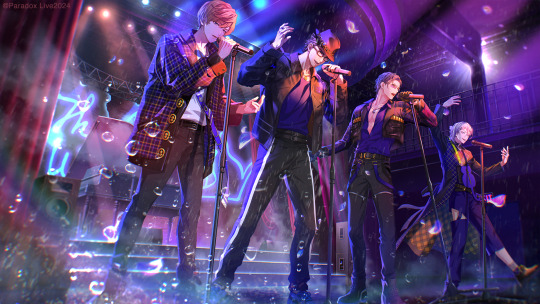



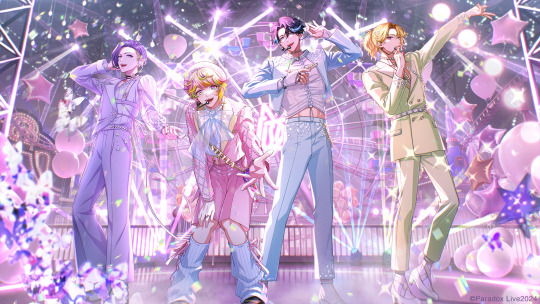
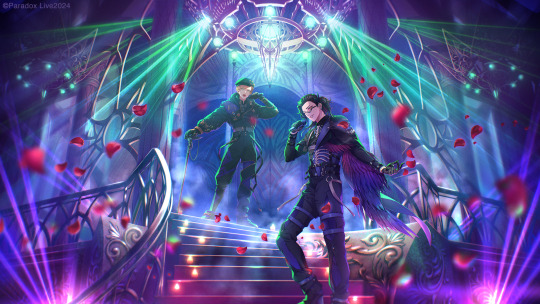


paradoxlive_PR
𝐏𝐚𝐫𝐚𝐝𝐨𝐱 𝐋𝐢𝐯𝐞••━━━━━━ ⠀⠀⠀⠀#パラライ5周年 ⠀⠀⠀キービジュアル公開 ━━━━••𝟓𝐭𝐡 𝐀𝐧𝐧𝐢𝐯𝐞𝐫𝐬𝐚𝐫𝐲 5周年を迎えた #パラライ 全チームの 新キービジュアルをお届け👀✨ 5周年公式サイトもCHECK👇 🔗 https://paradoxlive.jp/5thanniversary/
paradoxlive_PR
••━━━━━━━━━━━━━━ ⠀⠀⠀⠀⠀#パラライ5周年 ⠀🔥チーム別ビジュアル公開🔥 ━━━━━━━━━━━━━━•• 朱雀野 アレン (CV #梶原岳人 ) 燕 夏準 (CV #村瀬歩 ) アン・フォークナー (CV #96猫 ) #BAE #パラライ
paradoxlive_PR
••━━━━━━━━━━━━━━ ⠀⠀⠀⠀⠀#パラライ5周年 ⠀🍸チーム別ビジュアル公開🍸 ━━━━━━━━━━━━━━•• 西門 直明 (CV #竹内良太 ) 神林 匋平 (CV #林勇 ) 棗 リュウ (CV #花江夏樹 ) 闇堂 四季 (CV #寺島惇太 ) #TCW #パラライ
paradoxlive_PR
••━━━━━━━━━━━━━━ ⠀⠀⠀⠀⠀#パラライ5周年 ⠀🐍チーム別ビジュアル公開🐍 ━━━━━━━━━━━━━━•• 矢戸乃上 珂波汰 (CV #小林裕介 ) 矢戸乃上 那由汰 (CV #豊永利行 ) #cozmez #パラライ
paradoxlive_PR
••━━━━━━━━━━━━━━ ⠀⠀⠀⠀⠀#パラライ5周年 ⠀⚡️チーム別ビジュアル公開⚡️ ━━━━━━━━━━━━━━•• 翠石 依織 (CV:#近藤孝行 ) 雅邦 善 (CV:#志麻 ) 征木 北斎 (CV:#土岐隼一 ) 伊藤 紗月 (CV:#畠中祐 ) 円山 玲央 (CV:#矢野奨吾 ) #悪漢奴等 #パラライ
paradoxlive_PR
••━━━━━━━━━━━━━━ ⠀⠀⠀⠀⠀#パラライ5周年 ⠀🐉チーム別ビジュアル公開🐉 ━━━━━━━━━━━━━━•• 九頭竜 智生 (CV #小野賢章 ) 辰宮 晴臣 (CV #諏訪部順一 ) #武雷管 #パラライ
paradoxlive_PR
••━━━━━━━━━━━━━━ ⠀⠀⠀⠀⠀#パラライ5周年 ⠀⭐️チーム別ビジュアル公開⭐️ ━━━━━━━━━━━━━━•• 大和 憧吾 (CV #中島ヨシキ ) 緋景 斗真 (CV #伊東歌詞太郎 ) 呉羽 葵 (CV #愛美 ) 三洲寺 甘太郎 (CV #住谷哲栄 ) #VISTY #パラライ
paradoxlive_PR
••━━━━━━━━━━━━━━ ⠀⠀⠀⠀⠀#パラライ5周年 ⠀👑チーム別ビジュアル公開👑 ━━━━━━━━━━━━━━•• 燕 東夏 (CV #井上麻里奈 ) 白 忠成 (CV #置鮎龍太郎 ) #AMPRULE #パラライ
paradoxlive_PR
••━━━━━━━━━━━━━━ ⠀⠀⠀⠀⠀#パラライ5周年 ⠀♾チーム別ビジュアル公開♾ ━━━━━━━━━━━━━━•• 御山 京 (CV #天月 ) イツキ (CV #北村諒 ) ロクタ (CV #千葉翔也 ) #1Nm8 #パラライ
paradoxlive_PR
••━━━━━━━━━━━━━━ ⠀⠀⠀⠀⠀#パラライ5周年 ⠀🚨チーム別ビジュアル公開🚨 ━━━━━━━━━━━━━━•• 犬飼 憂人 (CV #古川慎 ) 土佐 凌牙 (CV #バトリ勝悟 ) 甲斐田 紫音 (CV #立花慎之介 ) 御子柴 賢太 (CV #小林千晃 ) #獄Luck #パラライ
#Paradox Live#ParaLive 5th#BAE#The Cat's Whiskers#cozmez#Akan Yatsura#Buraikan#VISTY#AMPRULE#1Nm8#GokuLuck#@paradoxlive_PR#ParaLive Twitter#Twitter
14 notes
·
View notes
Text

極楽浄土に住む伝説の霊鳥「共命鳥(ぐみょうちょう)」
一つの体に頭が二つある極楽浄土に住む鳥「共命鳥」。
極楽浄土には白鵠、孔雀、鸚鵡、舎利(九官鳥)、迦陵頻伽、そして今回登場する共命鳥が仏に仕える鳥として住んでいますが、それらの鳥をまとめているのは天空の守護神である迦楼羅王です。
ブッダが���まれる遥か昔、ヒマラヤの奥地に双頭の鳥が住んでいました。
一羽の名前はカルダ、もう一羽の名前はウバカルダ。
その鳥は「共命鳥」と呼ばれ、一羽が起きている間、もう一羽は眠っています。
ある日、カルダはウバカルダが眠っている間に摩頭迦という木の花を食べました。
カルダは摩頭迦の花を食べることは、もう一方のウバカルダもお腹いっぱいになって両方とも幸せになると思ったのですが、ウバカルダは目を覚ますと、カルダだけ美味しい花を食べたことに腹を立て、怒りの思いでカルダが眠っているうちに毒花を食べ恨みを晴らそうとしました。
眠りから覚め、ウバカルダが毒花を食べたことに気づいたカルダは、
「怒りや、貪り、愚かさには徳はない。このような愚かな行動は、自らを傷つけるだけでなく、多くの者をも巻き込んで皆を不幸にしてしまう」と語った後、2羽とも命を落としてしまいました。
片方が右へ行こうとすると、もう一方は左へ行きたいといい、片方が遊びたいといえば、もう一方は休みたいと、その都度別の意見で衝突して次第に怒りの念を増長させ、愚かな行動に走った共命鳥。
体が一つなのに頭が二つあるが故に生じる感覚や考えの違いが怒りに繋がり、やがて自らを滅ぼすという悲しい結末を迎えたこの物語。
貧欲、瞋恚、愚痴といった「三毒の煩悩」でお互いを傷つけあうことは無意味で罪深いことだと、この共命鳥のエピソードが教えてくれています。
共命鳥がこの世から消えてこの鳥の伝説も人々の記憶から忘れかけられた頃、修行中の僧が釈迦に質問をします。
「提婆達多(ダイバダッタ)は、あなたを妬んで悪いことばかりするが、それはどうしてでしょうか?」
すると、釈迦は「遥か昔の時代、彼と私は一身双頭の関係にあった。その時に毒のある実を食べたのが提婆達多で、私は体に役立つ方の実を食べた。かつてのことがそのまま続いており、私はいつも提婆達多に足を引っ張られている」と語ったそうです。
「共命鳥」に関するものは明治の無教養な連中による廃仏毀釈によってそのほとんどが失われましたが宗派を問わず、ごく一部の寺院の欄間や所蔵する仏画でその姿を見ることができます。
「他を滅ぼす道は己を滅ぼす道、他を生かす道こそ己の生かされる道」と悟った共命鳥は、阿弥陀如来に救われ、極楽浄土��朝夕6時になると美しい声で鳴き、仏の教えを伝えているといわれています。
提婆達多(ダイバダッタ):特撮ドラマのレインボーマンにも登場する釈迦の弟子で従兄弟の僧。
意見の違いから釈迦とぶつかり合い、釈迦を殺そうとして無間地獄から最下層の阿鼻地獄に落ちるが、もともとは釈迦の片腕である非常に優秀な僧であったため、伝説では幾度か転生を繰り返し天界を次第に昇り、聖者となって最後に人間界に戻ってくるといわれており、法華経では「天王如来」という位の高い仏として登場します。
26 notes
·
View notes
Text
reading demon slayer: chapter 45 name breakdown
hey guys. just fyi, the name breakdown for this post is gonna be a doozy. we've got seven (7) names to go through!! i'm excited but also a little worried about how long this will take to write up. putting it off will only make it take longer in the end, though, so let's get to it!
in this chapter we are introduced to the rest of the demon slayer hashira (lit. pillars). first up is
炎柱・煉獄 杏寿郎
or in english, flame hashira, rengoku kyoujurou. read as えんばしら・れんごく きょうじゅろう. 炎柱 is, of course, flame pillar. the family name 煉獄 is actually a regular word in japanese, meaning purgatory. from what i remember about the rengoku family, this seems fitting for the condition of kyoujurou's father when we meet him. trapped between the glory of his past hashira days and the despair of his wife's passing, plus his disillusionment with flame breathing, kyoujurou's father is most certainly in a purgatory of his own making.
on the flip side, kyoujurou's given name is quite sweet--literally. 杏寿郎 consists of the kanji 杏 (きょう), apricot; 寿 (じゅ), age, longevity; and 郎 (ろう), son. 杏 is also used in words referring to plums, ginkgo trees, and a few other living things (including two species of crabs). apricot trees can allegedly live for over 100 years, and ginkgo trees are very resilient so-called living fossils that coexisted with dinosaurs, so kyoujurou's name is a blessing for him to live a long life.
:(
second on our docket is the flamboyant
音柱・宇髄 天元
read as おとばしら・うずい てんげん. in english, the sound hashira, uzui tengen. 音柱 is sound pillar. 宇 (う) is the same character as in the word 宇宙 (うちゅう), universe, cosmos, space. it is almost exclusively used in space-related words, e.g. 宇宙開発事業団 (うちゅうかいはつじぎょうだん), national space development agency. 髄 (ずい) came up in chapter 5, and it means marrow or pith. so 宇髄 would literally be space marrow, or more figuratively perhaps essence of the universe.
in keeping with the celestial theme, 天 (てん) means sky, heaven, god. 元 (げん) can mean origin, foundation, cause. it can also mean former, past, previous. mathematically, 元 is an unknown in an equation, or an element of a set. 天元 might then be foundation of the heavens or even former god. a flashy name for a flashy man.
third in appearance is
恋柱・甘露寺 蜜璃
read as こいばしら・かんろじ みつり, or the love hashira, kanroji mitsuri. 恋柱 is love pillar. 甘露 (かんろ) means nectar or sweetness, and 寺 (じ) means temple. 蜜 (みつ) can mean nectar as well, but it is also used to mean honey, honeydew, treacle, and molasses. 璃 (り) isn't typically used on its own. it shows up most commonly in the word 瑠璃 (るり), lapis lazuli, and also in the word 玻璃 (はり), quartz, glass.
all together, her names could be interpreted as something like temple of sweetness and sparkling nectar, if i can be a little liberal with my translation. mitsuri's names are very cute and sweet (badum tss), which is fitting for the type of love that 恋 implies.
in fourth place is the solemn
岩柱・悲鳴嶼 行冥
read as いわばしら・ひめじま ぎょうめい, a.k.a. the stone hashira, himejima gyoumei. 岩柱 is stone pillar. you might be familiar with the character 悲 (ひ) from words like 悲しい (かなしい), sad, unhappy, sorrowful; or 悲しむ (かなしむ), to be sad, to mourn for, to regret. when pronounced as ひ, however, 悲 can stand for the buddhist term karuna, meaning compassion.
鳴 (め) is more commonly read as な, like in 鳴る, to sound, to resound, to echo; and 鳴く, (of an animal) to call, to cry, to chirp. some words that use the め(い) reading are 雷鳴 (らいめい), thunder, and 共鳴 (きょうめい), resonance (scientific term), sympathy. in general, 鳴 refers to a loud sound or echo.
interestingly, 悲鳴 (ひめい) is a word already, meaning shriek or scream. 嶼 (じま) is island. gyoumei's family name could thus be taken as meaning something like island of screams, but it could also be island of resounding sorrow or isle of the call of compassion or any variation thereof.
行 (ぎょう) is, of course, used in the word 行く, to go, but when read as ぎょう it means line (of text), row, verse. it can also be the buddhist term sankhara/samskara, meaning formations. 冥 (めい) carries feelings of darkness and gloominess, particularly as a metaphorical reference to the dead. for example, the word 冥福 (めいふく) roughly means happiness in the next world, and is used in the common phrase ご冥福をお祈りします, which is equivalent to the english phrase "may their soul rest in peace".
i really don't know enough about buddhism to explain what formations and darkness mean when put together, but all the kanji used in gyoumei's names suit his sorrowful demeanor.
the fifth slot today goes to
霞柱・時透 無一郎
read as かすみばしら・ときとう むいちろう, the mist hashira, tokitou muichirou. 霞柱 is mist pillar (or haze pillar). 時 (とき) is time, and also occasion, opportunity, season, the times. 透 (とう) isn't typically used on its own, but carries meanings of transparency and permeation, e.g. 透明 (とうめい), transparent, clear; and 浸透 (しんとう), permeation, infiltration, spread, penetration, pervasion.
i would read 時透 as meaning seeing through time in a roundabout way. or maybe penetration of time? muichirou and his brother's names parallel kokushibo and his brother's names, and muichirou and kokushibo are related, so there's a penetration of time there. but muichirou's initial amnesia has him seeing through time, so to speak, back to when his brother was still living, and that allows him to emulate his twin.
無一郎 is fairly simple to break down. 無 (む) is nothing, 一 (いち) is one, and 郎 (ろう) is son. however, 無 can be part of many other words, like 無限 (むげん), infinity (literally without limit), as muichirou's brother points out.
the sixth to join the fray is
蛇柱・伊黒 小芭内
read as へびばしら・いぐろ おばない--snake hashira, iguro obanai. 蛇柱 is snake pillar. 伊黒 uses the same 伊 as in inosuke's name (伊之助), which i covered in chapter 27's name breakdown. 伊 has no real meaning and is mainly used for the sound it represents. 黒 (ぐろ) is, of course, black. metaphorically 黒 can also mean guilt, or refer to a guilty person, or describe someone or something as being suspicious, evil, or unlucky.
obanai's color scheme is black and white, so 黒 fits him quite well. he also carries much guilt for being born to a demon-worshipping family, so that sense of 黒 suits him too.
小 (お) means small, 芭 (ば) means banana, and 内 (ない) means within. i have no idea what this name is supposed to mean. but i do have fun facts!
芭 is part of the word 芭蕉 (ばしょう), which specifically refers to the japanese banana tree Musa basjoo. there is another plant name, the 水芭蕉 (みずばしょう) or japanese swamp lantern, that uses the kanji 芭. supposedly this is due to some similarity between 芭蕉 and 水芭蕉, but i'm no botanist. 芭蕉 are cultivated in japan as ornamental plants and also for their fibers, which can be made into fabric or paper. oh, and the famous poet matsuo basho named himself after the 芭蕉.
(i first learned of basho from the magic tree house book dragon of the red dawn. i think i remember the basho in that book doing something with banana leaves, so there must have been some decent research that went into it. apparently basho is also a character in poptropica, on the island modeled after dragon of the red dawn. ah, memories.)
and last but not least, the seventh hashira we are introduced to is
風柱・不死川 実弥
or the wind hashira, shinazugawa sanemi. read as かぜばしら・しなずがわ さねみ. 風柱 is wind pillar. 不死川 is an interesting sequence of characters; 不死 (しなず), typically read as ふし, means immortality or eternal life, and 川 (がわ) means river. together, we get something like river of immortality. the unique reading of 不死 here comes from a bit of word play--不死 is literally undying or not dying, and 死なず (しなず), a more literary form of 死なない, means not dying.
実弥 consists of the kanji 実 (さね), which with the reading given means seed (of a fruit), pit, stone, and 弥 (み), meaning more, increasingly, extremely, very. when read as み, 弥 is typically used in words relating to buddhist figures or concepts. i think sanemi's name is supposed to emphasize his harsh personality, as it can be tough to swallow, much like the seeds of some fruits.
okay that's all the names. finally. this post took like 6 hours over 3 days to make. i'm never gonna look at it again. thanks for reading, and please look forward to the next posts! 読んでくれてありがとう!���の投稿を楽しみにしてください!
18 notes
·
View notes
Text
Pazuribe Event Translation - “VS Blue Lock!? Let’s settle it with soccer!” — Part 2

Some of the members from Toman mysteriously end up in Blue Lock! Now it's time to see what Chifuyu, Baji and Draken are up to!
You can read part 1 here!
─────────────────── ⋆⋅☆⋅⋆ ────────────────────
☆ Please give credit in case of use.
☆ I'm not a professional translator and I'm still learning Japanese. That's why some things might not match exactly/could have been better translated/there might be mistakes. This is a great way for me to learn. I put a lot of effort into making the translation as good as they can be!
☆ Find more pazuribe translations here!
☆ If you have any comment, question, correction or suggestion, please let me know! Interactions are appreciated (^^ゞ
OPENING STORY
タケミチ、マイキー、三ツ谷が潔と凛に出会っている頃…
Around the time Takemichi, Mikey and Mitsuya were meeting Isagi and Rin…
龍宮寺 堅:完全に道に迷ったな
Draken: We’re totally lost.
場地 圭介:チッ アイツらどこ行きやがった
Baji: Tch. Where the hell are they?
松野 千冬:見事にはぐれちゃいましたね… どうしますか?
Chifuyu: We totally went off track… What do we do?
場地 圭介:あ~、まああっちにはマイキーいるしなんかあっても返り討ちにすんだろ
Baji: Aah~ Well, they’ve got Mikey with them so if anything goes down, they will turn the tables on them.
松野 千冬:それはそうっスけど… 何が起こってる全くわからないでし。早めに合流したいですね
Chifuyu: That’s true but… we have no clue what’s going on. I want to meet up with them as soon as possible.
場地 圭介:ああ… にしてもめんどくせーなぁ とりあえず誰か見つけたらボコって話聞けんだけどな…
Baji: Aah… What a pain. For now, if we find someone, I’m gonna beat the hell out of them and make them listen…
龍宮寺 堅:おい、あんまり問題起こすなよ これ以上ややこしくすんな
Draken: Oy, don’t start any trouble. Don’t make things more complicated.
場地 圭介:わーってるよ
Baji: Aaall right.
松野 千冬:とりあえずここの扉開けてみます?
Chifuyu: Do you wanna open the door here for now?
場地 圭介:そうだな
Baji: Yeah.
ウィーン
Wiiin
???(蜂楽 廻):ねぇねぇ早く次やろうよ!
??? (Bachira): Hey, hey let’s do the next one quickly!
???(凪 誠士郎):え~めんどくさい
??? (Nagi): Eh~ What a hassle.
松野 千冬:あ!人いましたよ!
Chifuyu: Ah! There were people!
???(蜂楽 廻):あれ~?見たこと無い人がいる~
??? (Bachira): Huh~? I’ve never seen before~
???(凪 誠士郎):ほんとだ、誰?
??? (Nagi): For real, who are you?
松野 千冬:あー ちょっと聞きたいことがあんだけど
Chifuyu: Ahー I have something I want to ask you.
???(凪 誠士郎):この人達スーツ着てない
??? (Nagi): They aren’t wearing an equipment.
???(蜂楽 廻):ほんとだ~!もしかして不審者?
??? (Bachira): That’s true~! Maybe they’re dodgy people?
松野 千冬:はぁ?不審者なわけねぇーだろ!
Chifuyu: Hah? No way we are dodgy!
龍宮寺 堅:オレ達もよくわかんねぇが、気が付い��らここにいたんだ
Draken: We have no idea either, but we were here when we realised it.
???(蜂楽 廻):嘘っぽいなぁ~
??? (Bachira): Seems like a lie~
場地 圭介:ハァ どいてろドラケン、千冬ぅ
Baji: Hah. Get out of the way, Draken, Chifuyu.
松野 千冬:場地さん…?
Chifuyu: Baji-san…?
STORY BEFORE THE BOSS
松野 千冬:場地さん…?
Chifuyu: Baji-san…?
場地 圭介:オラァ!
Baji: Take that!
???(凪 誠士郎):!!
??? (Nagi): !!
???(蜂楽 廻):ほい!
??? (Bachira): Hey!
パチィ!!
Snap!!
場地 圭介:チッ
Baji: Tch.
龍宮寺 堅:場地!ややこしくすんな!!
Draken: Baji! Don’t make it difficult!!
松野 千冬:テメェ!場地さんに何しやがる!!
Chifuyu: You asshole! What the hell did you do to Baji-san!!
???(蜂楽 廻):先に手を出してきたのはそっちでしょ
??? (Bachira): You were the one to throw the first punch.
???(絵心 甚八):そこまでだ
??? (Ego): That’s enough.
場地 圭介:なんだ?
Baji: What?
???(絵心 甚八):拳だの暴力だのに頼るのはナンセンスだ ここは”青い監獄(ブルーロック)”勝敗はサッカーで決めろ
??? (Ego): It makes no sense to rely on fists and violence. This place is “Blue Lock” and we decide the outcome with soccer.
松野 千冬:急に話に入ってきて何なんだテメェ!!
Chifuyu: And why the hell are you suddenly getting into the conversation!!
絵心 甚八:俺の名前は絵心 甚八 その部屋にストラックアウトが出るようになってるから じゃーね
Ego: My name is Ego Jinpachi. Soccer goal targets are supposed to appear in that room so… See you.
???(蜂楽 廻):いーね!じゃあ早速始めよー!
??? (Bachira): Cooool! Then let’s start immediately!
???(凪 誠士郎):めんどくさいけど勝ってさっさと寝たい
??? (Nagi): What a pain, but let’s win so I can go to sleep.
場地 圭介:なんでそっちのルールに従わなきゃ…
Baji: Why should we follow those rules…
松野 千冬:いーぜ!さっさと負かして出口に案内させてやる
Chifuyu: Hell yeah! We’ll quickly defeat them and I’ll make you show us the exit.
場地 圭介:おい、勝手に…
Baji: Oy, do as you please…
???(蜂楽 廻):そうこなくっちゃ!
??? (Bachira): That’s more like it!
場地 圭介:チッ テメエら話を聞け!!!
Baji: Tch. You listen to me!!!
龍宮寺 堅:はぁ~ マイキー達は大丈夫か…?
Draken: Hah~ Are Mikey and the others okay…?
STORY AFTER THE BOSS
松野 千冬:ッシャア!!どうだ!!!
Chifuyu: Raaaah!! How you like that!!!
蜂楽 廻:すごい!2枚抜き~!ねぇねぇそういえば名前、考えてなかったよね!俺は蜂楽廻!君たちの名前は?
Bachira: Amazing! Two in a row~! Hey hey that reminds me, I didn’t think about your names! I’m Bachira Meguru. Your names are?
松野 千冬:オレは松野千冬 そしてこちらのカッケー人がオレの尊敬する場地圭介さんだ!
Chifuyu: I’m Matsuno Chifuyu. And that cool person I respect is Baji Keisuke.
場地 圭介:てめぇ、オレの名前まで勝手に紹介してんじゃねぇ
Baji: You, don’t introduce my own name at your own convenience.
松野 千冬:すみません!
Chifuyu: I’m sorry!
龍宮寺 堅:オレは龍宮寺堅 ドラケンでいいぜ
Draken: I’m Ryuguji Ken. Draken is fine.
蜂楽 廻:君たち面白いね~あっちで寝てるのは凪ね
Bachira: You all are so fun~ The one sleeping over there is Nagi.
場地 圭介:アイツ自分が蹴る時しか起きねぇけど…
Baji: He can barely stay awake when kicking…
蜂楽 廻:めんどくさがりなんだよね
Bachira: He’s a slacker.
松野 千冬:めんどくさがりの域超えてんな
Chifuyu: That’s more than being a slacker.
花垣 武道:おー!!いた!マイキー君!3人ともいました!
Takemichi: Ooh!! Found it! Mikey-kun! All three are here!
佐野 万次郎:お、オマエらもサッカーしてたんだ
Mikey: Oh, you are also playing soccer.
潔 世一:蜂楽達と一緒にいたのか~
Isagi: So you were with Bachira and the rest.
佐野 万次郎:コイツがあのメガネのやつのところまで案内してくれるんだって
Mikey: This guy is guiding us to that glasses guy's place.
場地 圭介:そこに行けば帰れんのか?だったらさっさと行こうぜ 流石にねみぃ
Baji: If we go there, can we go back home? If that’s the case, let’s go right now! I’m really sleepy.
・・・
潔 世一:ここだよ
Isagi: It’s here
ウィーン
Wiiin
潔 世一:絵心さん、失礼します 外部と連絡を取りたいという人たちが… 多分どっかの中学生かなとおもうんですが…
Isagi: Ego-san, excuse me. There’s some people who want to contact the outside… I think they might be middle schoolers…
絵心 甚八:ん?中学生?そんなのどこにいるんだ?
Ego: Mh? Middle schoolers? Where are they?
潔 世一:え?いやここに… あれ!?いない!?あのストラックアウトで勝負してた中学生たちを連れてきたはず…
Isagi: Eh? No, they’re here… Eh? They aren’t!? You should have brought the middle schoolers that were competing at the soccer goal targets…
絵心 甚八:何のことだ?
Ego: What are you talking about?
潔 世一:え!絵心さんがモニターから指示出してたじゃないですか!?
Isagi: Eh! Weren’t you giving us instructions from a monitor!?
絵心 甚八:俺はそんあの知らない
Ego: I have no idea about that.
潔 世一:え、えーーーー!!
Isagi: Eh, EEEEEH!!
・・・
花垣 武道:んっ… あれ?ここは…
Takemichi: Mhh… Eh? Is this…
松野 千冬:戻ってきてる!
Chifuyu: We are back!
龍宮寺 堅:マジで何だったんだ…?
Draken: Seriously, what was that…?
松野 千冬:さっきのヤツら意外といいヤツらでしたね
Chifuyu: Those dudes back there were surprisingly nice.
花垣 武道:そうだな~あの凛って人はちょっと怖かったけど
Takemichi: Yeah~ But that guy Rin was a little bit scary.
佐野 万次郎:オレはアイツとの勝負けっこう楽しかったよ
Mikey: I had a lot of fun competing against him.
三ツ谷 隆:でも無事に帰ってこれてよっかたよ
Mitsuya: But I’m glad we are back home without any issue.
佐野 万次郎:だな ふあ~あ、オレ眠くなってきた
Mikey: Agree. Yaaawn, I’m getting sleepy.
場地 圭介:オレも帰って寝てぇ バイクを流すのはまた日改めてにしようぜ
Baji: I’m also going back home to sleep. Let’s ride our bikes another day.
花垣 武道:はい!またご指導お願いします!
Takemichi: Yes! I appreciate your guidance!
STORY AFTER DEFEATING BOSS LVL. 2
蜂楽 廻:ふ~ん、結構やるね!
Bachira: Okaay, you’re doing well!
STORY AFTER DEFEATING BOSS LVL. 5
蜂楽 廻:面白くなってきた!
Bachira: Things are getting interesting!
STORY AFTER DEFEATING BOSS LVL. 10
蜂楽 廻:おぉ!2枚抜き!!
Bachira: Ooh! Two in a row!!
#finally done!#hugs and thanks to peke j land server again <3#pazuribe translation#pazuribe#puzz reve#tokyo revengers#hanagaki takemichi#tokyo revengers takemichi#sano manjiro#tokyo revengers mikey#sano mikey#baji keisuke#tokyo revengers baji#matsuno chifuyu#tokyo revengers chifuyu#mitsuya takashi#tokyo revengers mitsuya#draken#ryuguji ken#tokyo revengers draken#blue lock#ego jinpachi#isagi yoichi#bachira meguru#nagi seishiro
39 notes
·
View notes
Text
千葉県
Japanese Prefectures: Kantō - Chiba
都道府県 (とどうふけん) - Prefectures of Japan
Learning the kanji and a little bit about each of Japan’s 47 prefectures!
Kanji・漢字
千 ち、セン thousand
葉 は、ヨウ leaf, lobe
県 ケン prefecture
関東 かんとう Kantō, region consisting of Tokyo and surrounding prefectures
Prefectural Capital (県庁所在地) : Chiba City (千葉市)
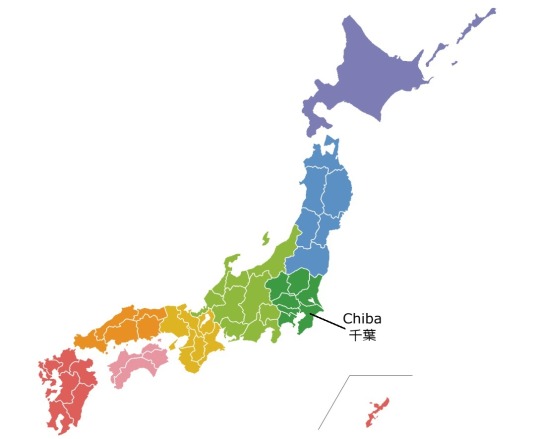
Chiba lies on the Bōsō Peninsula on the east coast of Tokyo Bay, about 20 miles (30 km) southeast of central Tokyo, and boasts many international facilities such as Narita International Airport, known as the gateway to Japan); Makuhari Messe, one of the most prominent convention centers in Asia; Kazusa DNA Research Institute, a world leader in cutting edge research; and Tokyo Disney Resort, with two theme parks that draw in 30 million patrons each year. It also boasts beaches for swimming, surfing, and diving and was the location for the first Olympic surfing games. Historically, Chiba was a castle town controlled by the Chiba family in the 12th–15th century, and during the Edo (Tokugawa) period (1603–1867) it served as a post-station town for several major roads. After the construction of a railway connecting it to Tokyo, the town began to grow in the second half of the 19th century.
Recommended Tourist Spot・おすすめ観光スポット Mt Nokogiri - 鋸山
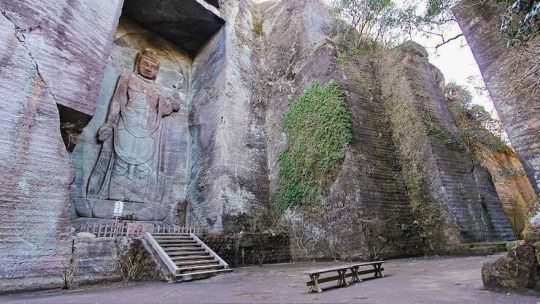
Mt. Nokogiri - Hyaku-Shaku Kannon carved into stone cliff
Mt. Nokogiri is named for the zigzag shape of a traditional handsaw that its topography resembles. Along with Mt. Kanozan and Mt. Kiyosumi, Mt. Nokogiri is one of Chiba's three most famous mountains. It stands at 330 meters high and features a grand lookout point as well as a temple complex containing one of Japan's largest Buddhas. The mountain is bare granite and has been a quarry since the Edo Period, providing stones for many of Tokyo's most iconic sites, such as Yasukuni Shrine and Waseda University. You can reach the top by an easy hike or via a ropeway to the top. Hell Lookout (地獄のぞき) is a lookout point at the top of the mountain that hangs over the edge of the cliff and offers a stunning view of Tokyo Bay, the Pacific Ocean, and the distant forests and hills of the Boso Peninsula, and on clear days, Mt. Fuji.
At the southern base of Mt. Nokogiri is Nihonji Temple (日本寺), an officially designated Important Cultural Property. There's a stairway leading from the top of the mountain down to the vast, picturesque Soto Zen Buddhist temple that dates back 1300 years and is still used to train young monks today. A giant daibutsu, or Buddha statue, is carved into the granite on the side of Mt. Nokogiri about midway up the mountain. It is 31 meters high and one of Japan's largest Buddhas, even larger than Kamakura's famous daibutsu at Kotokuin Temple. The statue was built to pray for world peace and most of the statue was carved over three years beginning in 1780.
In addition to the giant daibutsu, there are around 1500 small statues of various Buddhist deities around the temple grounds. Unfortunately, many of the smaller statues were beheaded during the anti-Buddhist movement that accompanied the Meiji Restoration, but there are ongoing efforts to repair them. This part of Nihonji was a spiritual sanctuary built over 21 years in the 18th century by craftsman Ono Kangoro and his students. Towards the top of the mountain stands a 30-meter tall Hyaku-Shaku Kannon, depicting the Buddhist Goddess of Mercy. Carved in 1966 into a stone cliff, it is dedicated to those who died in wars, of sickness or in accidents. The Kannon is also worshiped as a protector of transportation due to its protected location surrounded by rocks.
Regional Cuisine - 郷土料理 Sangayaki - さんが焼き
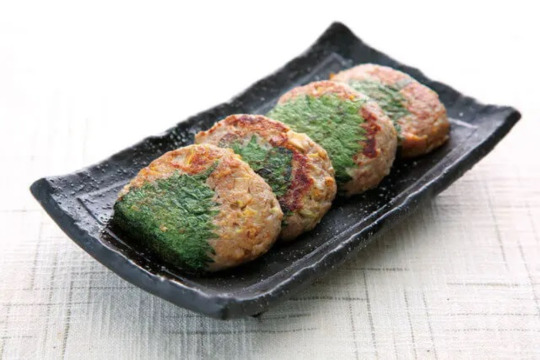
Sangayaki (source)
Namerou and sangayaki are well-known Chiba dishes, especially along the Bōsō Peninsula. Namerou (なめろう) is a dish usually made of minced horse mackerel and sardine mixed with miso, perilla leaves, and leek. When grilled and wrapped in perilla leaves, it is called sangayaki (さんが焼き). The name "namerou" may have come from the fact that namerou is so good that you want to lick your plate clean (nameru means to lick). The name "sangayaki" may be from the fact that the fishermen ate the dish along a river tributary, or sanga, and the word yaki means to grill (like yakisoba or yakitori). Namerou can be cooked in other ways, such as being shaped and grilled like a burger, or being coated in breadcrumbs and fried.
Chiba Dialect・Chiba no hougen・千葉の方言
Note: Chiba dialect is sometimes called Bōsō-ben (房総弁), after the peninsula. Chiba dialect is actually a family of three dialects: Bōshū-ben (房州弁), Tōsō-ben 東総弁, and Noda-ben (野田弁).
Bōshū-ben (房州弁)
1. おいねえ oinee not good
はしけえでおいねえや (hashikee de oinee ya)
Standard Japanese: かゆくていけないよ (kayukute ikenai yo)
English: This itches so badly
2. くわっせえ kuwassee please eat (command)
ばーさんほら、わーかでいーがらくわっせぇよ (baa-san hora, wa-ka de iigara kuwassei yo)
Standard Japanese: おばあさんほら、少しでいいから召し上がってよ (obaasan hora, sukoshi demo ii kara meshi agate yo)
English: Grandma, come on, please just eat a little bit
3. やんべえ yanbee health; condition (often used in a greeting)
いいやんべえだねえ (ii yanbee da nee)
Standard Japanese: こんにちは (konnichiwa)
English: Hello; Good day (lit. "you are in good health today")
Tōsō-ben 東総弁
1. あじょうだぁ ajyou daa how is it
あじょうだぁ? (ajyou daa?)
Standard Japanese: どうですか? (dou desu ka?)
English: How is it?
2. ねっけぇ nekkee warm
今日はずいぶんとねっけぇね (kyou wa zuibun to nekkee ne)
Standard Japanese: 今日はずいぶんと暖かいね (kyou wa zuibun to atatakai ne)
English: Today is fairly warm, isn't it?
3. わんらー wanraa you (informal, not very polite)
わんらーよー!んなことやってねーよ! (wanraa you! 'n na koto yatte nee yo!)
Standard Japanese: あなたねえ!そんな事しないでよ! (anata nee! sonna koto shinai de yo!)
English: Hey you! Stop doing that!
Noda-ben (野田弁)
1. こわい kowai difficult, taxing, bothersome
風邪ひいででまーだこわいだよなぁ (kaze hiide de maa-da kowai da yo naa)
Standard Japanese: 風邪を引いていてまだ身体がだるいんだよね (kaze wo hiite ite mada karada ga daruin da yo ne)
English: I have a cold and my body still feels listless
2. はらくち harakuchi full
はらくちだよなぁ (harakuchi da yo naa)
Standard Japanese: お腹いっぱいだよね (onaka ippai da yo ne)
English: I'm full
3. やっこら yakora soon
やっこらいくべ (yakora iku be)
Standard Japanese: そろそろいこうか (sorosoro ikou ka)
English: Shall we go soon?
#japanese prefectures#日本語#japanese#japanese language#japanese langblr#langblr#studyblr#都道府県#千葉県#chiba
37 notes
·
View notes
Quote
芸能人でもないのに「キャラ」だの「芸風」だのという言葉を日常的に使用し、日々ペルソナ作りに余念のないこの国の人々は、シミュラークルの鏡地獄に完全に取り込まれていると考えてよい。「芸人になるな」とは寺山修司の警句だが、一億総芸人時代にそれが可能なのは、相当な精神力を持った人だけだ。
Twitter / POGE: 芸能人でもないのに「キャラ」だの「芸風」だのという言 … (via edieelee)
16 notes
·
View notes
Text
【鬼滅の刃】炭治郎@萌、煉獄@ゆや、宇髄@鍛冶架レン、甘露寺@ゆに、小芭内@鞠、冨岡@やまと、童磨@まこと、魘夢@ちかな →2020_01_05








13 notes
·
View notes